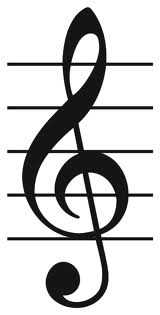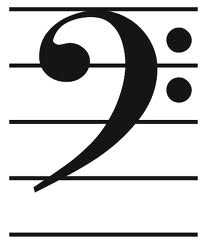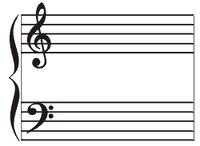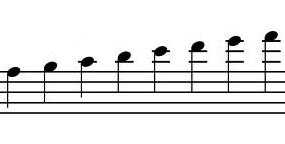How to Read Music - Staves and Clefs
There are some people who can listen to a song, sound out the notes and figure out all on their own how to play that song (whether it be on piano, or any other instrument for that matter). That is a skill that is either (luckily) born onto people or they acquire it after years of practice. If neither of those two options happens to fit you very well, there is another alternative to learning to play your favorite songs: sheet music.
Sheet music is for musicians as a map is to a sailor. It provides us with a blueprint for how the song should be played, how loud, how fast, which notes to play, what order to play them in...the list goes on and on.
Don't be afraid to walk through these next few lessons with me if you have never read a sheet of music in your life! If you already know how to read music, then more power to you! I expect you will want to skip the next few lessons, but if you really want to...you're welcome to join us!
The Staff
No I am not talking about the people who cater to you at fancy hotels or restaurants...I am talking about the absolute foundation for sheet music. The staff is that familiar set of 5 horizontal lines that notes are written on.
Not only does the staff provide a place to orderly arrange notes to be played, it also tells us a lot about the particular song they represent. The top of the staff represents higher pitched notes to be played while lower on the staff naturally represents lower pitched notes.
A staff will always begin with what's called a clef to tell the musician what notes the lines on the staff mean. The two main clefs you will see are the Treble Clef, also called the 'G' clef, and the Bass Clef, or the 'F' clef. I will explain a little more in detail about these in a moment, but first I want to mention that clefs are named (G or F) for which line on the staff they feature. You will understand what I mean when you can visualize these two clefs and what they look like on the staff.
The Treble Clef or “G” Clef
This clef will almost always represent what your right hand will play on the piano. It is used for “Middle C” and above (for the most part).
It is referred to as the “G” clef because when you look at the picture of it, it appears to swirl around a line on the staff. This is where the note “G” is placed, is on this line.
Some say you need to draw the clef in two strokes, both origintating from the top of the figure, but I found, for my own purposes, that one quick motion and I can get the idea across. I'm not looking to send manuscripts to production!
The Bass Clef or “F” Clef
The bass clef is the counterpart to the treble clef. It is used to denote the lower pitched notes in a song, such as you would play with your left hand on a piano. It is mainly used for notes below “Middle C.”
The reason it is called the “F” clef is because the two dots on the right side of the figure straddle the line in the staff where an “F” note would be played.
You should pay very close attention to which clef your staff is written with because the same lines on a treble clef staff are not the same notes as those on a bass clef staff.
The Grand Staff
This will be the most common staff you will see when playing piano sheet music. It consists of a top staff with a treble clef and a bottom staff with a bass clef. As you may have guessed, these are used to help you play your right hand and left hand 'on top' of each other, or at the same time...a skill even the pro's still work hard at perfecting! That is why the staves are stacked like they are, is to better visualize where notes in your left hand line up with notes in your right hand, or in most cases, where they don't line up.
Staff Ledger Lines
Sometimes, the five lines on a staff will not be able to include all the notes you may want to play on a piano. There are 88 keys on the piano, but only 18 possibilities for notes inside one staff (36 for a grand staff) so there must be a way to account for all those extra notes! There is, and they are called Ledger Lines.
All you do to write ledger lines is pretend that the staff actually does extend beyond the standard 5 lines and mark your own lines! You don't need to extend the lines along the entire length of the staff, just enough underneath or above a note so that you can see how many lines the composer has added to the staff.




